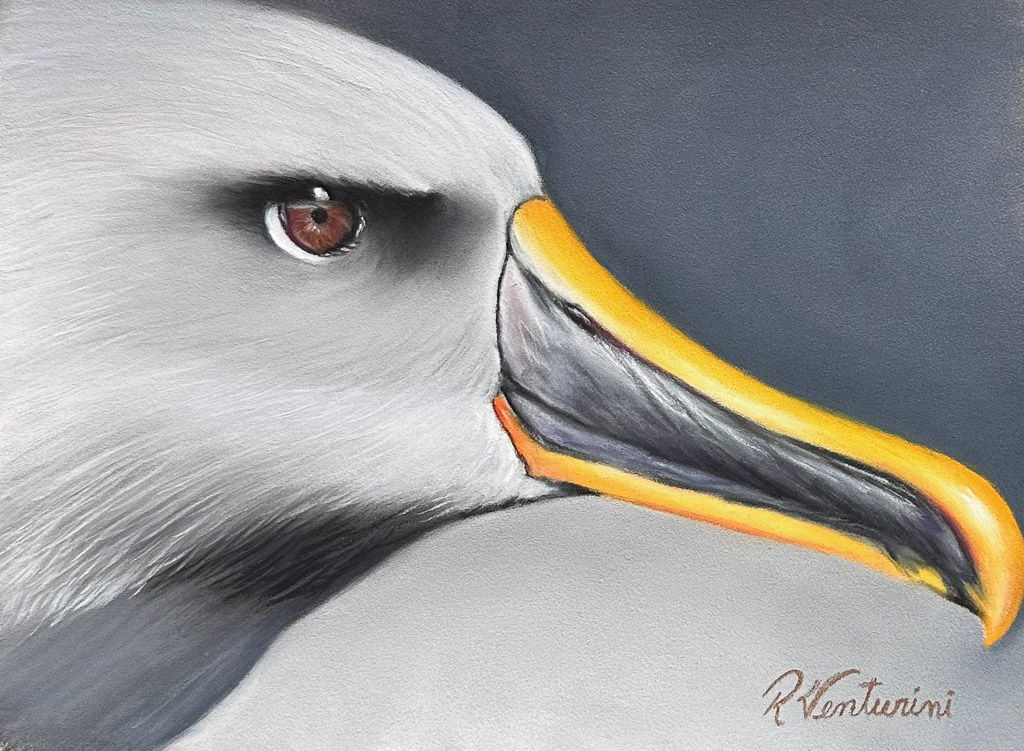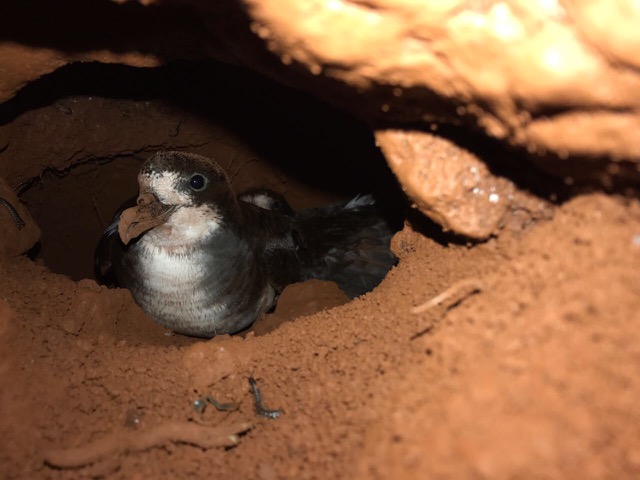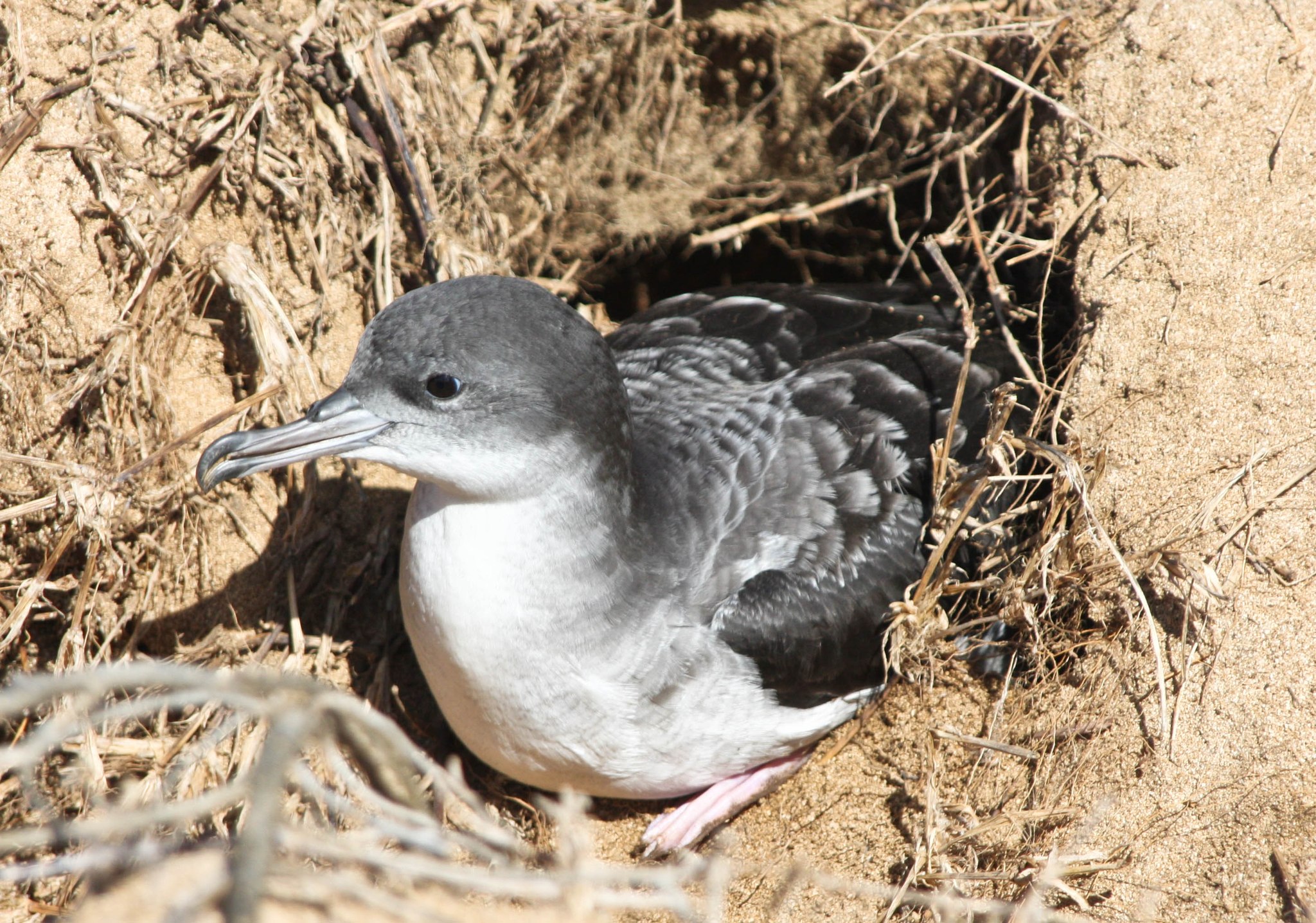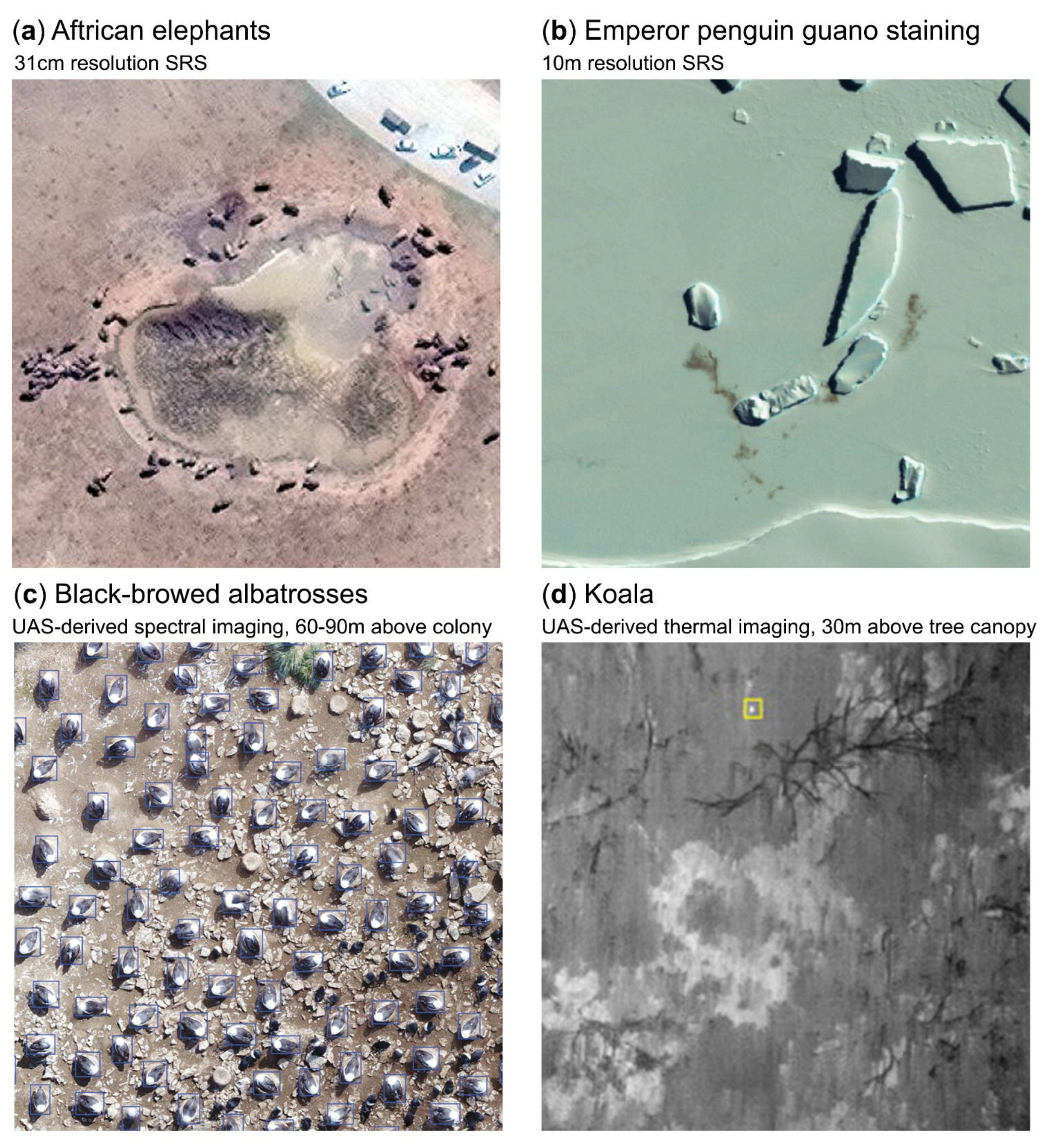 Short-tailed Albatrosses "George and Geraldine enclosed in an ethereal protective boundary" by Agnieszka Elliott from a photo by Jonathan Plissner
Short-tailed Albatrosses "George and Geraldine enclosed in an ethereal protective boundary" by Agnieszka Elliott from a photo by Jonathan Plissner
Artists and Biologists Unite for Nature (ABUN) have extended the date for artwork submissions to Project #47 for this year’s World Albatross Day under the theme, “Marine Protected Areas – Safeguarding our Oceans”, until 21 April 2024.
This year marks ACAP’s fifth collaboration with ABUN for World Albatross Day and though contributions were a little slow to begin with, ABUN artists appear to have hit their stride with many more pieces submitted over the last couple of weeks.
 Top row left to right: "They heard there was a party going on!" by Di Roberts; Short-tailed Albatross 'George' by Lois Davis from a photo by Jonathan Plissner; "All you need is love & Zumba" by Grace Innemee;
Top row left to right: "They heard there was a party going on!" by Di Roberts; Short-tailed Albatross 'George' by Lois Davis from a photo by Jonathan Plissner; "All you need is love & Zumba" by Grace Innemee;
Bottom row left to right: "Short-tailed Albatross pair George and Geraldine" by Lisa Riley; "Albatross colony near Dunedin" by Christina Rebekah Todd from a photo by her husband; "Short-tailed Albatrosses George and Geraldine" by Shary Page Weckwerth after a photo by Jonathan Plissner
23 stunning pieces from 16 artists have been submitted to the project (view them all in an ACAP Facebook album), with some artists having produced multiple works for the project. Ellyn Bousman Lentz and Sandhaya Verma have both produced two pieces for the project, whilst Flávia F. Barreto has created four.
 Top row left to right by Flávia F. Barreto: "Buller´s albatrosses" from a photo by Dominique Filippi; "Short-tailed albatross and Torishima Island" from two ACAP photos; "Buller´s Albatross" from a photo by Laurie Smaglick Johnson
Top row left to right by Flávia F. Barreto: "Buller´s albatrosses" from a photo by Dominique Filippi; "Short-tailed albatross and Torishima Island" from two ACAP photos; "Buller´s Albatross" from a photo by Laurie Smaglick Johnson
Bottom row left to right: "Short-Tailed Albatrosses George and Geraldine on Midway" by Sandhaya Verma from a photo by Jonathan Plissner; "Short-Tailed Albatross chick at 16 weeks on Midway" by Sandhaya Verma from a photo by Jonathan Plissner; "OUR SEAS" by Georgia F. Feild;
This year's World Albatross Day, celebrated on 19 June is focusing on the connection between albatrosses and the ocean, highlighting how Marine Protected Areas (MPAs) can help improve the conservation status of these magnificent birds.
 "Buller's Albatross Portrait" by Rosana Venturini from a photo by Ross Wheeler
"Buller's Albatross Portrait" by Rosana Venturini from a photo by Ross Wheeler
New Zealand’s Near Threatened Buller's Albatross Thalassarche bulleri and the Vulnerable Short-tailed Albatross Phoebastria albatrus have been chosen as the featured species for 2024’s World Albatross Day celebrations.
Find out more about this year's World Albatross Day at the ACAP website, here.
5 April 2024

 English
English  Français
Français  Español
Español 
 A Galapagos Petrel in its burrow, photograph by Carolina Proaño
A Galapagos Petrel in its burrow, photograph by Carolina Proaño
 From the paper: Figure 1. Hawai‘i Pacific University students weigh ‘Ua‘u kani chicks to study phenology, chick growth, and reproductive success.
From the paper: Figure 1. Hawai‘i Pacific University students weigh ‘Ua‘u kani chicks to study phenology, chick growth, and reproductive success. A Wedge-tailed Shearwater; photograph courtesy of Pacific Rim Conservation
A Wedge-tailed Shearwater; photograph courtesy of Pacific Rim Conservation Figure 1 from the paper shows examples of wildlife detected in satellite and unmanned aircraft system (UAS) imagery. (a) VHR satellites can be used to count individual animals provided that they meet key detection criteria: in an open habitat, of suitable size, and of contrasting colour to the background. For instance, African elephants are visible in open savannahs using 31 cm resolution WorldView-3 imagery [14]. (b) Indirect counts can be performed for species which are not directly detectable; for example, colony sizes of emperor penguins can be estimated from the colony area or the extent of guano staining using 10 m resolution Sentinel-2 satellite imagery [15]. (c) Spectral imagery collected by UAS is typically of higher resolution than that of satellite sensors, enabling counts of smaller animals, such as black-browed albatrosses, in open habitats [16]. (d) For species in closed-cover habitats, for instance, koalas in tree canopy (shown in yellow box), thermal cameras mounted on UAS can aid detection [17]. All panels are cropped versions of the originals and are reproduced under CC BY 4.0 licenses.
Figure 1 from the paper shows examples of wildlife detected in satellite and unmanned aircraft system (UAS) imagery. (a) VHR satellites can be used to count individual animals provided that they meet key detection criteria: in an open habitat, of suitable size, and of contrasting colour to the background. For instance, African elephants are visible in open savannahs using 31 cm resolution WorldView-3 imagery [14]. (b) Indirect counts can be performed for species which are not directly detectable; for example, colony sizes of emperor penguins can be estimated from the colony area or the extent of guano staining using 10 m resolution Sentinel-2 satellite imagery [15]. (c) Spectral imagery collected by UAS is typically of higher resolution than that of satellite sensors, enabling counts of smaller animals, such as black-browed albatrosses, in open habitats [16]. (d) For species in closed-cover habitats, for instance, koalas in tree canopy (shown in yellow box), thermal cameras mounted on UAS can aid detection [17]. All panels are cropped versions of the originals and are reproduced under CC BY 4.0 licenses.